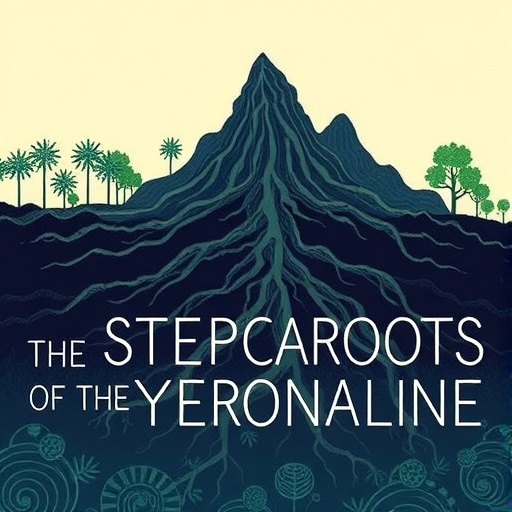An international team of scientists has unveiled groundbreaking evidence demonstrating human impact on tropical soil erosion thousands of years earlier than previously believed, reshaping our understanding of humanity’s long-standing influence on Earth’s natural systems. By meticulously analyzing sediment cores retrieved from the Indian Ocean near East Java, Indonesia, researchers have traced the intricate relationship between early agricultural practices and landscape changes spanning the last 5,000 years. These findings challenge conventional timelines of human environmental interference and underscore the multidimensional dynamics between climatic forces and anthropogenic activity in shaping terrestrial erosion processes.
The foundation of this revelation lies in sediment cores collected during a 2005 expedition aboard the research vessel SONNE. Sediments deposited on the ocean floor serve as an untapped archive of geological and environmental information, preserving the subtle fingerprints of past events. Over millennia, rivers transport eroded soil particles originating from the continent’s interior, depositing them into adjacent marine basins. This natural sedimentation process creates a chronological record that, when examined through state-of-the-art geochemical and molecular techniques, offers unprecedented insights into the historical variability of soil erosion and climatic conditions.
To reconstruct a detailed erosion history, the research team employed molecular markers sensitive to soil erosion and vegetation fire events, juxtaposed with paleohydrological data indicative of humidity and atmospheric moisture regimes. This multiparametric approach enabled the scientists to dissect temporal erosion patterns and their driving forces with remarkable fidelity. The sedimentary record revealed distinct periods of intensified soil detachment and transport, intricately linked with shifts in land use and environmental conditions.
The analyses indicated that approximately 3,500 years ago, human-driven land cultivation began profoundly altering erosion dynamics. Importantly, this epoch corresponds to a notable surge in fire-related molecular markers without concomitant changes in vegetation types or regional hydroclimate, strongly suggesting the widespread use of fire as a land clearance tool — a technique commonly known as slash-and-burn agriculture. This practice, employed to convert forested land to arable fields, inadvertently heightened soil vulnerability to erosive forces by reducing protective vegetation cover and destabilizing soil aggregates, thereby accelerating sediment delivery to the ocean.
Lead researcher Dr. Yanming Ruan emphasizes the significance of these findings, noting that “early farming practices likely increased soil susceptibility to erosion,” marking an unmistakable anthropogenic imprint on the environment far earlier than modern industrialization. The sediment record thus challenges the entrenched notion of a pristine pre-Anthropocene era and invites a reevaluation of humanity’s ancient ecological footprint, extending what some describe as the “deep root of the Anthropocene.”
Co-author Dr. Enno Schefuß elaborates on the broader implications of this research, highlighting the necessity of comparing contemporary environmental alterations with baseline conditions predating human influence. This extended temporal lens reveals that human activities have long been active agents shaping the Earth’s biogeochemical cycles and landscape processes. Understanding the extent and timing of these early impacts enriches climate and environmental models that inform sustainable management of terrestrial ecosystems under ongoing global change.
Further into the sedimentary archive, the study reveals that the most pronounced soil erosion episodes occurred within the last 500 years during periods of intensified agriculture coupled with monsoon-driven extreme rainfall events. This interaction between anthropogenic land use intensification and natural climatic variability exacerbates soil degradation, contributing to the depletion of vital natural resources in tropical regions. The amplified sediment flux into marine systems has implications for coastal morphology, marine habitats, and biogeochemical cycles.
Looking forward, the researchers caution that progressive global warming may intensify monsoonal precipitation in Indonesia, potentially escalating erosion processes and endangering soil sustainability. As climate change modulates the intensity and frequency of rainfall, the resilience of tropical landscapes to erosion may be further compromised, with cascading effects on food security, ecosystem services, and regional socio-economic stability.
This pioneering study synthesizes geochemical proxy data with paleoenvironmental reconstructions to disentangle complex interactions between climatic drivers and human activities through time. The multiproxy sediment analysis exemplifies the power of marine archives in deciphering terrestrial environmental histories, offering a nuanced window into early anthropogenic environmental transformations often obscured in terrestrial records by erosion or human disturbance.
Such interdisciplinary collaboration spanned institutions across Germany, the Netherlands, China, Australia, and beyond, pooling expertise in organic geochemistry, paleoclimatology, microbiology, and earth system sciences. These diverse scientific perspectives were integral to deciphering the molecular signatures preserved in sedimentary deposits, transforming raw data into coherent narratives about our planet’s past.
The study, published in Geophysical Research Letters, symbolically extends the Anthropocene narrative, illustrating how human-induced changes are deeply woven into Earth’s recent geological history — far preceding the industrial age’s conventional onset of extensive ecological alteration. By pushing back the timeline of significant human environmental modification, this research calls for a recalibration of how societies perceive their historical role in shaping Earth’s environment.
Moreover, this work underscores the importance of integrating long-term paleoenvironmental data into contemporary environmental assessments and policy frameworks. Recognizing ancient human impacts facilitates more informed strategies for managing soil resources, conserving biodiversity, and mitigating future erosion risks within vulnerable tropical systems increasingly threatened by both anthropogenic pressures and climate variability.
As global environmental challenges mount, insights derived from deep sedimentary archives become crucial tools for anticipating future landscape trajectories and supporting adaptive approaches to land and water resource management. This research vividly illustrates the lasting legacy of early agricultural civilizations, embedding their influence within the Earth’s surface processes, reminding us that humanity’s relationship with the natural world is complex, enduring, and transformative.
Subject of Research: Human impact on soil erosion in tropical regions during the late Holocene, evidenced by sediment core analysis
Article Title: Late Holocene human impact on tropical soil erosion in the Maritime Continent
References: Yanming Ruan, Mahyar Mohtadi, Lydie M. Dupont, Dierk Hebbeln, Sander van der Kaars, Wenwen Chen, Ellen C. Hopmans, Stefan Schouten, Matthias Prange, Jens Hefter, Gesine Mollenhauer, Enno Schefuß: Late Holocene human impact on tropical soil erosion in the Maritime Continent. Geophysical Research Letters 2025. DOI: 10.1029/2025GL114695
Image Credits: MARUM – Center for Marine Environmental Sciences, University of Bremen; V. Diekamp
Keywords: Earth sciences, Paleontology, Oceanography, Hydrogeochemistry, Geochemistry




